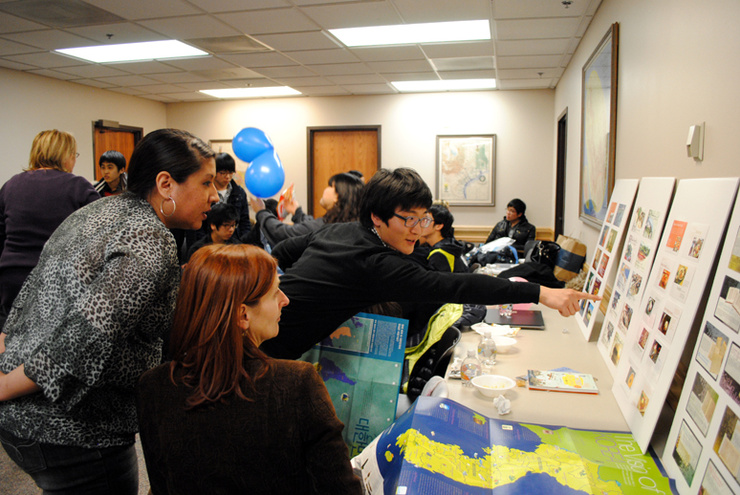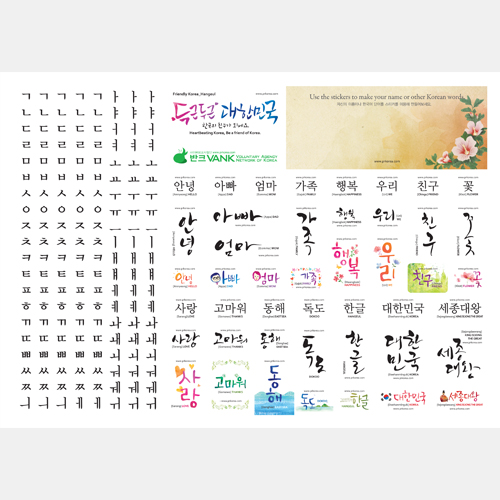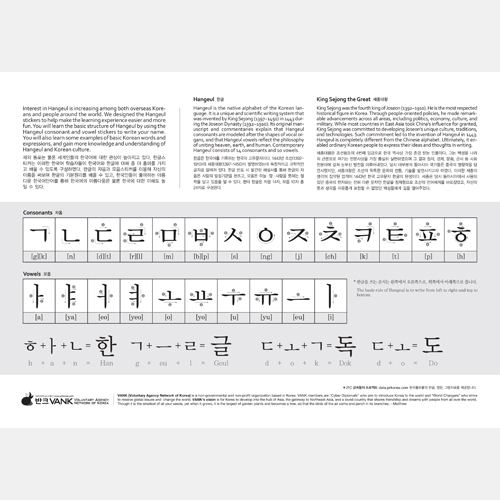 Have you ever thought about learning a new language? Maybe you are someone who has found a passion for language study and has been studying for most of your life. Or maybe you studied up through high school or college but ultimately decided it just was not the path for you. Or maybe you have never really given language study much thought. But even if you are not someone who feels they have a particular affinity for language study, it is impossible to deny that language is everywhere, and its diversity is what makes our world such a fascinating and beautiful place in which to live and learn.
Have you ever thought about learning a new language? Maybe you are someone who has found a passion for language study and has been studying for most of your life. Or maybe you studied up through high school or college but ultimately decided it just was not the path for you. Or maybe you have never really given language study much thought. But even if you are not someone who feels they have a particular affinity for language study, it is impossible to deny that language is everywhere, and its diversity is what makes our world such a fascinating and beautiful place in which to live and learn.
As of right now, it is estimated that there are about 6,500 languages being spoken around the world. And among this vast amount of languages, Korean has begun to secure itself a spot in US language education.
Before getting into the specifics, it would probably be best to first get an idea of what the Korean language is like and how it compares to other more commonly taught languages. To start, Korean is spoken by around 77 million people, and is the official language of the Republic of Korea (around 48 million speakers) as well as the Democratic People’s Republic of Korea (around 21 million speakers). There are also a sizable number of first-language speakers in China, the US, and Japan, making Korean the 14th most spoken language in the world.
Korean has also been deemed as one of the hardest languages to learn for those whose first language is English. The US Department of State’s Foreign Service Institute has created a scale that ranks a foreign language’s difficulty for speakers whose first language is English based on how much time it takes for one to become proficient in the target language. The scale ranges from categories one to four, with category four containing the languages that take the longest in which to achieve proficiency. Korean, along with Mandarin Chinese, Cantonese, Japanese, and Arabic, is classified as one of the Category IV languages, and it is estimated to take around 2,200 class hours, or 88 weeks, to become proficient in the language. The difficulty of Korean becomes apparent when we compare it with Spanish and French, two of the most commonly taught languages in the US. Both languages are categorized as Category I languages and take only about 24 to 30 weeks (600 to 750 class hours) to achieve proficiency.
Looking at this relatively large gap, it can easily be said that Korean is, as defined by the Foreign Institute Service, a “super-hard language.”
Why might that be?
First, Korean and English have very different word orders that make constructing sentences difficult. While English follows a subject – verb – object word order [I(s) eat(v) cake(o)], Korean is a subject – object – verb language [I(s) cake(o) eat(v) 나는 케이크를 먹는다], so translating one’s thoughts from English to Korean can become complicated fairly quickly, especially when you decide to throw in lots of adjectives, adverbs, relative clauses and all those fun things. On top of that, Korean and English have essentially no shared vocabulary, aside from the English loan words that have become adapted into the Korean language and vice versa. Therefore, unlike Spanish, which has a fair number of cognates that can help language learners acquire vocabulary a lot faster, acquiring and memorizing Korean vocabulary can seem like an abstract and endless process. Lastly, Korean has a lot of elements that simply are not present in English, such as the use of particles to mark subjects and objects, as well as different conjugations used to express different levels of respect to the listener. Not to mention the pronunciation system that utilizes phonemes that are absent in English.

So, if Korean is so difficult, why are so many people interested in learning it?
When talking about the rise of Korean language education in the US, it is almost inevitable that the mention of hallyu (한류), or the “Korean Wave,” will be brought up as a major factor. Hallyu can essentially be defined as the increasing popularity of Korean popular culture and its spread throughout the world, with things such as Korean popular music, dramas, and movies becoming a major point of interest for many. Music groups such as BTS (방탄소년단) and Blackpink (블랙핑크) have essentially become household names, and the Oscar-winning film Parasite (기생충) was almost all anyone could talk about in 2019, becoming the first foreign language film to be awarded Best Picture. Most recently, the hit drama series Squid Game (오징어 게임) has ascended to become Netflix’s number one show in over 90 countries and is the first non-English content to claim such a spot in the US.
With so much exposure to content produced in Korean, it seems only natural that people would begin to gain interest in learning the language, both for fun and also to better understand the subtle nuances and cultural references that simply cannot be translated into English.
However, popular culture is not the only cause for such a rise in demand for Korean language education. As of 2020, the Republic of Korea’s economy was ranked tenth in terms of nominal GDP and is home to some of the world’s largest companies such as Samsung and Hyundai. Therefore, Korean is also a very practical language to learn for those who are interested in business or who may want to work in the IT industry.
With a basic understanding of the causes, we can now more closely examine exactly how much Korean education has grown in the US.
As of 2016, there were approximately 14,000 undergraduate and graduate students enrolled in Korean language courses at the university level, which marked a 75% increase in enrollment just between the fall 2013 semester and the fall 2016 semester. It is now ranked as the 11th most studied language in the US. While this only accounts for around 0.9% of the US population, it is a drastic increase from the mere 7,000 learners that were present in 2006, showing a 50% increase in just ten years, while other languages such as Spanish and French actually showed decreases in enrollments in the same time period.
As of 2016, 162 post-secondary institutions were reported to have offered Korean language courses, growing from 135 institutions in 2009. While only 6% of post-secondary institutions and a mere 0.5% of primary and secondary institutions offer Korean language courses, the steadily growing demand gives hope for the expansion of the Korean language classroom in the US.
It is also worth mentioning the existence of Korean heritage language schools, which provide not only language courses, but also lessons and activities related to Korean culture for youth who speak Korean as a heritage language. As of 2009, the US Korean Embassy reported that there were approximately 1,200 community language schools in operation with a total student enrollment of around 60,000. While there has been a significant increase in people of non-Korean heritage enrolling in Korean language courses, it should not be forgotten how heritage speakers make up a significant percent of the US’ Korean education classroom.
And for those who may not have access to university classes or programs in their community, they need not worry. That is because the amount of online resources for learning Korean has also skyrocketed with its increasing popularity. With YouTube channels such as Talk To Me In Korean and GO! Billy Korean providing short and fun video lessons, and websites such as How to Study Korean supplying in-depth explanations of Korean grammar and vocabulary, Korean language learners are offered a plethora of options to choose from and can customize their Korean language learning experience to their own wants and needs. The well-known app Duolingo, due to the rise in demand for Korean language learning resources, also added a Korean course which has gone on to become the second fastest growing language on the app as of 2020. After the release of the hit drama Squid Game, the app saw a 40% increase in US learners.
Even though the increasing trend in Korean language studies is a relatively recent phenomenon, the US government has been promoting the study of Korean for some time now. It has deemed Korean to be a critical language, meaning that its study by Americans is critical to the nation’s security and prosperity, and has developed programs such as the Korean Flagship Program under the National Security Education Program to help accelerate students’ learning and help them achieve a “superior” level of proficiency in a shorter period of time through intensive coursework and immersion programs. They have also provided funding for scholarships such as the Critical Language Scholarship (CLS) and the Boren Scholarship, giving students more opportunities to actually study abroad and learn in an immersive environment. As the popularity of Korean continues to rise, it can be expected that more people will begin to take advantage of these opportunities and work to answer the US government’s call for more critical language learners.
Seeing Korean expand and flourish within the US gives hope for a brighter future where languages that were once considered “obscure” and “impractical” are given the recognition they deserve and learners of all languages are given the proper resources and support they need to achieve their goals. It is nothing if not refreshing to see so many people expressing interest in learning Korean, and it is even more inspiring to see the wonder and passion so many people express as they are ushered into the new and exciting world of Korean culture and language.


Written by : Allison Garbacz
From Illinois, United States. Current 5th-year undergraduate at the University of Wisconsin-Madison, B.A. Candidate for Linguistics, B.A. Candidate for Asian Languages and Cultural Studies, Exchange student at Korea University, Intern at VANK (Voluntary Agency Network of Korea)